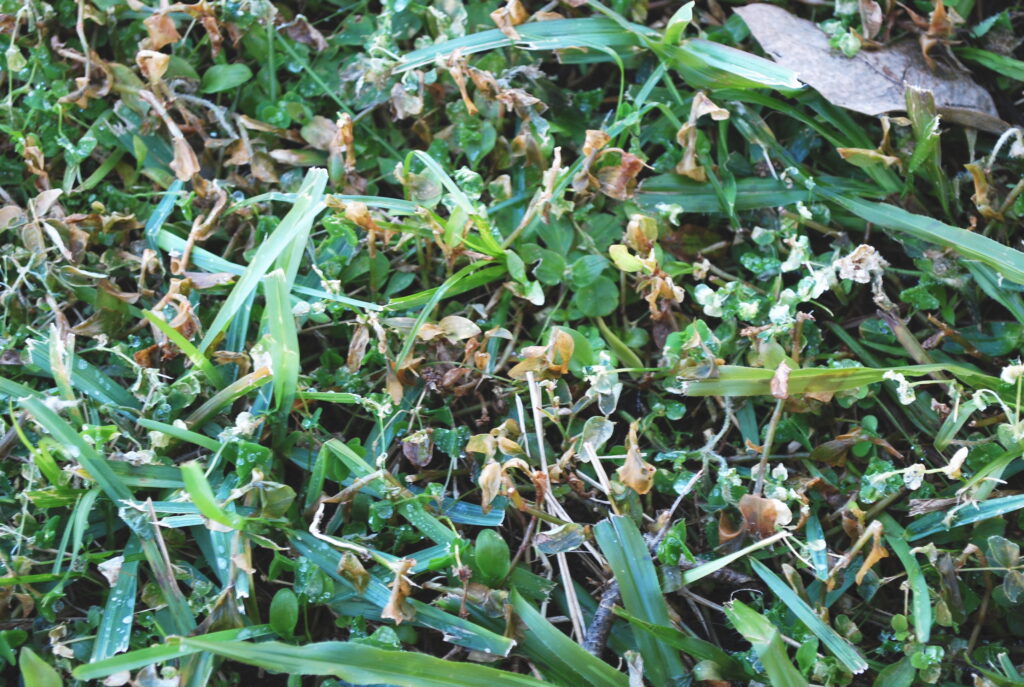Many landscapes have taken a beating from this year’s frigid winter weather. Much of the plant damage has yet to show. It may take a month or more for all of the plants to indicate the extent of the damage. Expect plants to exhibit more damage as the weather continues to warm and time passes. Wait to prune and fertilize cold-damaged landscape plants.

Some most likely plants to show severe damage include impatiens, hibiscus, ginger, firespike, split-leaf philodendron, and plumbago. In the northern sections of our area, citrus may be damaged.
There will be a temptation to hard prune damaged plants, fertilize early and heavily, and water frequently to push plants into new growth. Avoid these temptations. Though some plants may respond to such treatments, many others will not be able to take the stress, and this will cause them to fail.
Landscape plants damaged by the cold, like injured humans, need time and care to recover well. Monitor the soil and landscape and only apply water when necessary. Before turning the water on wilted plants, check the soil; wilt may be a cold damage symptom and not from water stress. Water only if the soil is dry and on the days designated by watering restrictions. This is particularly true of turf; wet soils only contribute to further damage.
Replenish the mulch in beds and around trees and shrubs if necessary; a 4 – 6 inch layer is a good thing to protect roots and conserve moisture. Do not apply fertilizer for several weeks and when you do, choose a balanced slow-release product to gently and evenly supply the nutrients necessary for renewal.
Prune damaged plants when you can no longer stand the brown, but try to wait until the possibility of another cold front passes. When you do prune, trim below any noticeable damage. Mowing is pruning the turf, and the same rules apply. Many folks will want to cut plants all the way to the ground or mow the turf very low. This practice causes more harm than good, remove only damaged plant tissue and use proper pruning techniques.
If landscape plants are replaced, choose those with some cold tolerance. As the climate changes, wild swings in temperatures are to be expected. The best time to prepare for a round of frigid temperatures is when choosing plants for the landscape. Check out Protecting the landscape when it gets cold for info about what to do when freezing temperatures blow through.
This column and image first appeared in the Treasure Coast Newspapers.
Leave a Reply